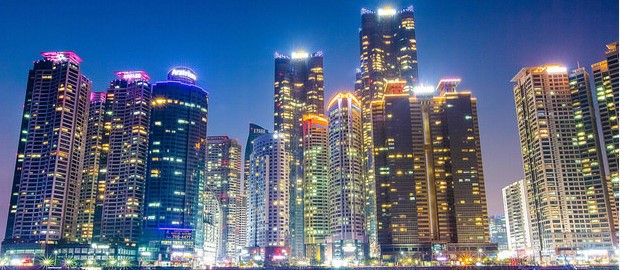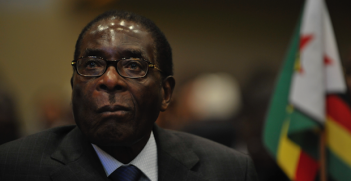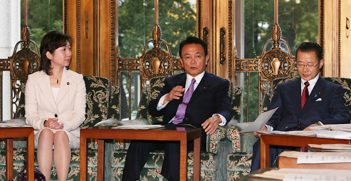South Korea's Foreign Aid: Evolution and Potential

South Korea’s increasing importance as a donor of foreign aid showcases not only the country’s role as a global power but also its remarkable transformation and evolution.
As a poster child for successful poverty eradication, South Korea is the only country in the world to have transitioned from a recipient of official development assistance (ODA) to a donor. This is no small feat and the story of South Korea’s unparalleled economic and social development characterises the nature of its foreign aid program, its potential and also the obstacles it must overcome.
From rags to riches
To onlookers and the world’s developing nations, Korea’s economic ascent is a model for success. In less than one generation it has transformed itself from one of the poorest countries in the world, with a per capita income of less than US$70 in 1960, to the world’s 11th largest economy. As well as transitioning to a democracy and almost completely eradicating poverty and illiteracy, South Korea has become the most wired country in the world. It also prides itself on having the world’s fastest internet speed and is dominating the global tech market.
The climax of South Korea’s development story came in 2010 when it was accepted as a member of the prestigious OECD Development Assistance Committee (DAC), in part due to its eagerness to share its successful development experience. The country’s ODA now amounts to more than US$1.8 billion (0.14 per cent gross national income) and is forecast to increase by as much as two per cent in 2016. With a regional focus on East and Southeast Asia, South Korea operates scores of development projects in 15 priority countries. It also hosts a wide range of international forums on development effectiveness, sustainability and ODA.
Pali-pali culture, Korean nationalism and policy rhetoric
South Korea’s foreign aid program suffers from many of the same obstacles as other countries. It places too much focus on its own development model and not enough on the real needs and context of the countries it is assisting. Strong nationalism and pride in Korea’s development success inherently characterise the country’s foreign aid style.
Exporting the Korean development model and concentrating aid efforts on human resources development and technical cooperation is a fundamental aspect of the country’s foreign assistance agenda. The Saemaul Undong model of rural development is often the focal point of international development conferences held by Korea and is encouraged to be mimicked in the developing world as a model to achieve similar economic success. As with other models of development, such as those of other East Asian nations, just because a single model worked for one state does not mean that it can be applied ubiquitously.
Despite hosting hundreds of foreign participants annually in development training programs and technical transfer workshops, much of the program time is focused on studying Korean culture and history with less on the actual transfer of knowledge. Korea’s development story is also a unique one and much can be attributed to the resilience of its people and a strong cultural identity, as opposed to successful aid policies.
The ‘pali-pali’ or fast-paced culture of Korean society also extends to its foreign aid programs where the quantity of projects being implemented seems to be of greater priority than ensuring their quality. Many of Korean aid agency KOICA’s overseas aid projects lack appropriate pre-surveys, monitoring and evaluation and long-term sustainability strategies. In a bid to become a recognised global power, South Korea has rushed to take charge of implementing a greater number of development assistance projects and has set goals that are sometimes too broad and unfocused.
South Korea’s potential to lead global development
The obstacles that Korea’s foreign aid program faces should not be allowed to obscure the country’s achievements. Nor should it diminish its potential to capitalise on its strengths and implement more effective development assistance.
Ranked the world’s most innovative country in 2015, perhaps the most promising area for South Korea’s potential contribution to the Sustainable Development Goals (SDGs) is through its private sector. Public-private partnerships, new sources of development financing and technological innovation are key themes of the post-2015 development agenda. With the top 10 chaebol groups (family-owned conglomerates) accounting for almost 80 per cent of Korea’s GDP and boasting high levels of innovation and research and development, involving them in the development sector has the potential not just to yield new sources of financing, but also expand opportunities for sustainable solutions.
In addition to the technological dominance of its private sector, Korea’s dynamic civil society is also active in examining and promoting new ways to improve its development assistance and foreign aid programs. Unlike Australia, which lacks a wide range of think tanks and research institutes dedicated to development, South Korea has no short supply.
Part of South Korea’s potential for growing influence in the development landscape is through its cooperation with neighbours China and Japan. Despite tense political relationships, in the development sector there is a close collaborative partnership between various development actors and research institutes across the three countries. KOICA and the Japanese development agency, JICA, host joint training programs and workshops, and there are frequent academic forums held with a focus on East Asian development models and pathways for trilateral cooperation.
Finally, if there is anything that the story of South Korea’s growth has reiterated, it is the resilience of its people and the country’s adaptability to change. Continually setting high ODA growth targets and actively facilitating discussion on development effectiveness and sustainability, South Korea’s ability to adjust to rapid change is its greatest asset. The more South Korea brings its domestic innovation to the forefront and continues to implement positive changes in its foreign aid program, the greater the role it will play in leading a path to global development.
Luisa Cools obtained a Master of International Development from RMIT and is a former AIIA Queensland intern. She is a recipient of the AIIA’s Euan Crone Asian Awareness Scholarship, which she used to conduct field research in South Korea. This article is published under a Creative Commons Licence and may be republished with attribution.





